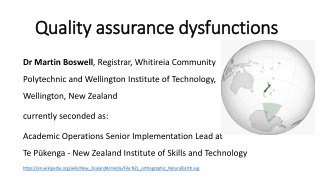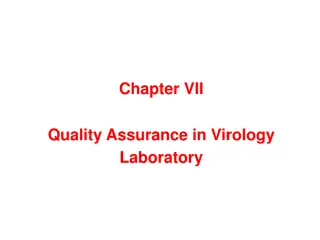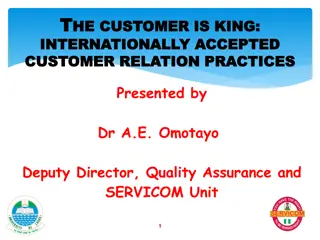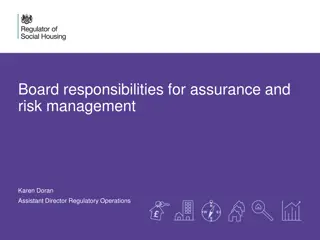
Life Assurance and Protection Insurance
Explore the importance of life assurance and protection insurance, including the differences between life cover and term assurance. Discover how these financial products offer security and peace of mind for individuals and their families.
Download Presentation

Please find below an Image/Link to download the presentation.
The content on the website is provided AS IS for your information and personal use only. It may not be sold, licensed, or shared on other websites without obtaining consent from the author. If you encounter any issues during the download, it is possible that the publisher has removed the file from their server.
You are allowed to download the files provided on this website for personal or commercial use, subject to the condition that they are used lawfully. All files are the property of their respective owners.
The content on the website is provided AS IS for your information and personal use only. It may not be sold, licensed, or shared on other websites without obtaining consent from the author.
E N D
Presentation Transcript
CISI Financial Products, Markets & Services Topic Other Retail Financial Products (10.3 and 10.4) Life Assurance and Protection Insurance cisi.org
Life and Protection Insurance Provides individuals with some financial protection in case certain events occur. Insurance protects against something that might happen e.g. Loss of job, burglary or death in the next 25-years Assurance helps to minimise the financial impact of events that will definitely happen e.g. death The big insurance companies are global operations, so the range of products they offer have common features and are similar wherever they are sold. cisi.org
Life Assurance Life assurance policies involve the payment of premiums (i.e. fees) in exchange for life cover (a lump sum payable upon death) These policies are commonly taken out to.... provide for dependants after death (typically the spouse and children) pay off any outstanding mortgage on the death of the borrower cisi.org
Types of life cover There are two main types of life cover: OR Whole-life Policy Term Assurance Provides cover for a fixed period of time and will pay out if death occurs during that period Provides PERMANENT cover and pays out whenever death occurs Referred to as Life assurance as the person will die at some point and the policy will pay out when this happen Referred to as Life insurance as the person might die during the fixed period of the policy. The policy will only pay out if death occurs within the period covered cisi.org
Types of life cover term assurance Terms Funds available to pay Purposes Premiums The amount paid for the policy will depend upon: The amount insured Policy length Personal profile: Policy is for a set period of time off any outstanding mortgage Provides a lump sum used to generate income for a surviving partner o Age - the older you are, statistically the more likely to die within the term o Sex - women have longer life expectancy than men o Family history - certain diseases are hereditary 20 years 25 years Policyholder selects the sum to be paid out if death occurs in the period Funds to pay any tax that might become payable on death. o Smoker? Non-smokers will pay less for their policy o Hobbies dangerous sports? cisi.org oOccupation dangerous job?
Types of life cover term assurance There are three types of term assurance cover: Type of term assurance Level of cover Premiums Level Cover Remains the same throughout the period in which the policy is in force Fixed at the outset and do not change during the period of the policy. Increases each year often rise by inflation or a set percentage Increases each year in line with inflation or a set percentage Increasing Cover Decreases each year often linked to a mortgage which would be paid out on death Fixed at the outset and do not change during the period of the policy. Decreasing Cover cisi.org
Types of life cover whole-of-life assurance Whole-of-life assurance policies pay out on the death of the policy-holder, regardless of when that might occur. They are usually linked in with investment plans. There are three types: 1. Non-profit policy Offers a set amount of cover (pay-out)on the death of the person, regardless of when that might occur: The insured sum is chosen at the outset and is fixed Guaranteed amount paid out means that the policy does not depend on investment growth There is no savings portion for this type of policy Equivalent of a term policy where the term will only end when the insured dies Premiums are often very high. cisi.org A quotation for whole-of-life non-profit policy for a male non-smoker, aged 54 (statistically likely to live another 25 years). 25 years worth of premiums at 50 per month makes a total of 15,000. Invested in gilts at 4%, those premiums would provide a nominal return of over 25,000
Types of life cover whole-of-life assurance 2. With-profits policy Offers a minimum amount of cover (pay-out). If the insured dies during the policy period: The minimum cover is increased each year by the addition of annual bonuses: o Bonuses are based on the performance of the underlying investment portfolio run by the insurance company o Bonuses are usually spread out over a number of years to smooth the effect of fluctuating stock market returns o In a good year not all of the positive return will be added to the allocated bonus which should enable the insurance company to add a bonus even in a bad year o Profits are locked in each year, ie, the bonuses permanently increase the basic guaranteed sum cisi.org
Types of life cover whole-of-life assurance 2. With-profits policy A typical scheme might pay out: The sum assured or guaranteed sum, which is usually an amount a little less than the premiums paid over the term; Annual bonuses - If the underlying performance of the investments in the fund is better than expected part of the A terminal bonus at the end of the period: o It is not declared until the end of the policy term. o Tops up the policy to give it the appropriate share of the with-profits fund. cisi.org
Types of life cover whole-of-life assurance 3. Unit-linked policies Premiums SAVINGS LIFE ASSURANCE COVER Buys units in the insurance company s investment fund as opposed to allocating them to the with-profits fund. The eventual return will be dependent upon the performance of the funds selected. As with with- profits policies, investment returns of unit-linked policies are usually smoothed to reduce volatility cisi.org
Protection Planning There are four main areas that might be in need of protection: Area for Protection Type of cover Purpose Illness may force an individual to give up work replaces earnings from work Pay for specialist medical treatment Costs that permanent disability bring Critical Illness Cover Pay a lump sum in the event that a person suffers from any one of a wide range of critical illnesses Family & Personal Income Protection Cover pay out an income benefit when a person is unable to work for a prolonged period due to sickness or incapacity Pays bills if the main income-earner were to fall ill can be expensive Short-term cover relatively inexpensive but exclusions and limits apply Accident and Sickness Cover taken out for annual periods and can provide for income or lump sum payments in the event of an accident. Medical Insurance Cover the cost of medical and hospital expenses Cover the cost of rebuilding Covers possessions stolen Covers weather damage Covers accidents Household Cover cisi.org
Protection Planning Area for Protection Type of cover Mortgage Payment Protection Cover Payments that are due for a mortgage continue to be paid after an unfortunate event. Available from the lending institution, as well as insurance companies. Long-term Care Cover Provide the funds that will be needed in later life to meet the cost of care. Purpose Mortgage Short-term loss of earnings Covers if a person is ill Covers if a person loses their job Covers if a person has an accident Covers the cost of nursing home care premiums are expensive Long-term Care Normally be paid as an income that can be used to cover the expenditure. Business Key person may become ill or die the business may no longer be able to generate sufficient profits without the key person s contribution. Business Cover A substantial shareholder or partner within the business may die. Their shareholding or partnership stake may need to be bought out by the remaining shareholders/ partners. cisi.org
Remember..... cisi.org






















